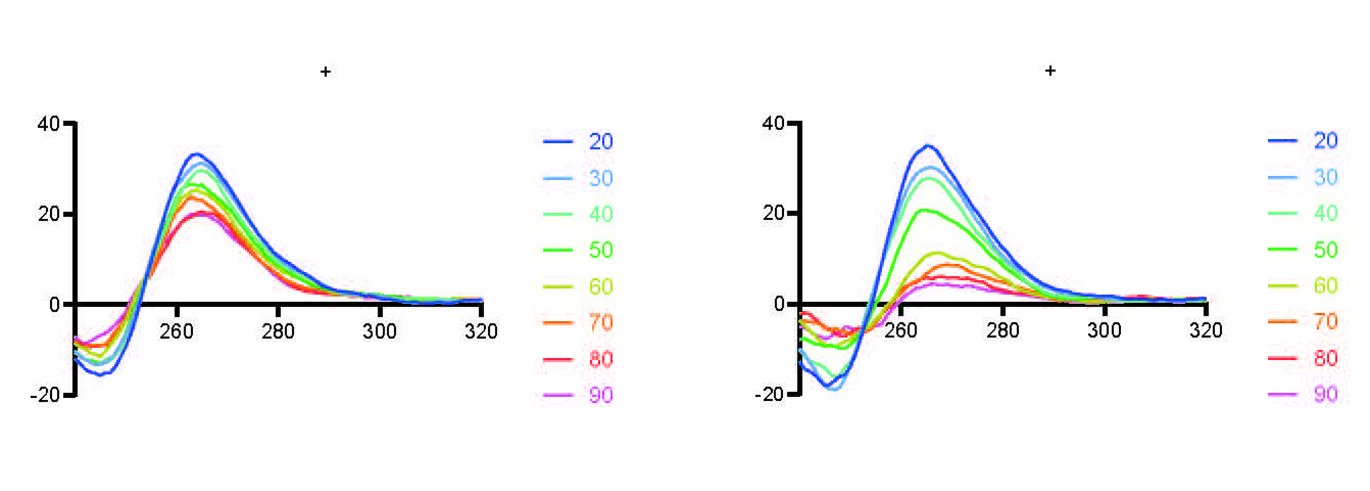New tools reveal how genes work and cells organize
Researchers from Aarhus University and the Italian Institute of Technology have discovered how certain proteins can attach to special structures in RNA, called G-quadruplexes. Additionally, they have developed computational tools capable of predicting these protein-RNA interactions. The newfound ability to predict these interactions can help future work in understanding molecular pathways in the cell and pave the way for developing drugs targeting these RNA G-quadruplex binding proteins, that are found to be involved in disease such as cancer.

Proteins binding to RNA are important in many processes in the cell and can mediate a range of biological functions. A specialized structure in both DNA and RNA, the G-quadruplex, are regulatory elements involved in gene expression in both DNA and RNA. In the present work the researchers use theoretical predictions and molecular biology experiments to show that many chromatin-binding proteins bind to RNA G-quadruplexes. With this information they can classify proteins based on their potential to bind RNA G-quadruplexes.
The study uses a combination of experimental identification of RNA G-quadruplex-binding proteins and computational methods to build a prediction tool that identify the probability that a protein binds to RNA G-quadruplexes. The findings show that predicted proteins show a high degree of protein disorder and hydrophilicity, suggesting an involvement in both transcription and phase-separation into membrane-less organelles.
Ulf Ørom’s group has previously shown that RNA-DNA dual binding proteins are likely to have an involvement in the DNA damage response, linking DNA and RNA binding properties to a number of proteins. In the new study, the researchers expanded the knowledge of RNA-binding proteins to identify RNA G-quadruplex binding proteins.
The researchers have also developed a computational tool to assess RNA G-quadruplex-binding potential of proteins that can be accessed at http://service.tartaglialab.com/new_submission/clever_G4_classifier.
With these new results, the researchers identify properties of protein-RNA interactions, and provide means to identify G-quadruplex binding properties that can potentially be targeted therapeutically in disease.
The findings have just been published in Nature Communications.
SUPPLEMENTARY INFORMATION, INCLUDING CONTACT INFORMATION
We strive to ensure that all our articles live up to the Danish universities' principles for good research communication. Against this background, the article is supplemented with the following information:
Study type:
Experiment
External funding:
ERC ASTRA_855923 (G.G.T.) and EIC Pathfinder IVBM4PAP_101098989 (G.G.T.), The Novo Nordisk Foundation, Independent Research Fund Denmark, The Lundbeck Foundation, Danish Cancer Society and Carlsberg Foundation(U.A.V.Ø.). RNA initiative and IIT and a grant from the National Center for Gene Therapy and Drugsbased on RNA Technology (CN00000041, EPNRRCN3) supported by the European Union.
Conflicts of interest:
None
Link to the scientific article:
Predicting nuclear G-quadruplex RNA-binding proteins with roles in transcription and phase separation
Johanna Luige1, Alexandros Armaos2, Gian Gaetano Tartaglia2,3 & Ulf Andersson Vang Ørom1
1RNA Biology and Innovation, Department of Molecular Biology and Genetics, Aarhus University, Denmark
2Centre for Human Technologies (CHT), Istituto Italiano di Tecnologia (IIT), Genova, Italy
3Catalan Institution for Research and Advanced Studies ICREA Passeig Lluis Companys, Barcelona, Spain
For more information, please contact:
Associate Professor Ulf Andersson Vang Ørom
Department of Molecular Biology and Genetics
Aarhus University, Denmark
E-mail: ulf.orom@mbg.au.dk – Mobile: +45 2228 8766
